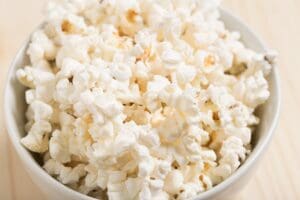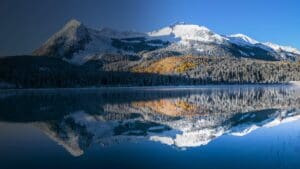This week’s installment in our Plastic Series is on food and beverage packaging. Plastic packaging leads directly to human consumption of microplastics and associated chemicals in our day to day lives. Microplastics in our food and water are getting a lot of attention right now, but they are not the source of toxicity due to plastic. Did you know plasticizers (chemical components of plastic) used in food and beverage packaging easily migrate into our food and water? Some of these chemicals have known negative health effects.
“Migration of chemicals from food packaging into food and beverages is considered the main source of human exposure to contaminants associated with plastic.”
Some food packaging chemicals are defined as indirect food additives by the US Federal Food Drug and Cosmetics Act. So, these chemicals can be found in food even if they come from the package. Some of these chemicals have been shown to affect many body systems, including the endocrine system. We’ll share more on the effects of plastic and plasticizers on the endocrine and other body systems in a later post.
How Do Plastic Chemicals Get into my Food and Water?
Plastic chemicals migrate into your food in different ways, like contact with acidic or alkaline foods, exposure to UV light, and heat.
For instance, coffee has an acidic pH of 2.0-3.0, so it can leech plastic polymers from the lining of its container. PFAS can to leach from popcorn bags into the kernels while in the hot microwave. BPA leaches from plastic bottles into water and other beverages while sitting in hot shipping containers during transport.
Common Toxic Plastic Chemicals found in Food & Beverage Packaging
Free Radicals:
“All plastic contains reactive oxygen species, or free radicals, which are unstable molecules that contain oxygen and easily react with other molecules in a cell.”
FreshPure® Alkaline Water has a negative Oxidation Reduction Potential (ORP) meaning it has the ability to reduce the level of free radicals. The high level of free radicals in packaged food is a great reason to incorporate Alkaline Water into a healthy daily routine.
BPA:
 Have you ever noticed that after sitting in a hot car, some single-use water bottles become more pliable? That’s because they contain Bisphenol-A (BPA). One of the most well-known toxic chemicals in plastic, BPA is used in polycarbonate water bottles to make the plastic more flexible and durable. When polycarobonate bottles are exposed to heat, migration of BPA into your water increases. That’s the “plastic-y” taste you notice after a bottle of water has been sitting in a hot car.
Have you ever noticed that after sitting in a hot car, some single-use water bottles become more pliable? That’s because they contain Bisphenol-A (BPA). One of the most well-known toxic chemicals in plastic, BPA is used in polycarbonate water bottles to make the plastic more flexible and durable. When polycarobonate bottles are exposed to heat, migration of BPA into your water increases. That’s the “plastic-y” taste you notice after a bottle of water has been sitting in a hot car.
BPA is a known carcinogen and endocrine disruptor.
PFAS:
You may have noticed a flurry of news articles about water contaminated by per- and polyfluoroalkyl substances (PFAS) lately. Places near military bases and airports are at a higher risk of PFAS seeping into groundwater and entering the public water supply. But, did you know that PFAS are also used in plastic packaging? They provide a non-stick barrier on the inside of paper and fiber containers, like the inside of a pizza box.
PFAS has been getting more attention because its associated negative health effects are now being confirmed by the EPA. The EPA reports:
“Most people have been exposed to PFAS. Certain PFAS can accumulate and stay in the human body for long periods of time. There is evidence that exposure to PFAS can lead to adverse health outcomes in humans. The most-studied PFAS chemicals are PFOA and PFOS. Studies indicate that PFOA and PFOS can cause reproductive and developmental, liver and kidney, and immunological effects in laboratory animals. Both chemicals have caused tumors in animals. The most consistent findings are increased cholesterol levels among exposed populations, with more limited findings related to:
- low infant birth weights,

- effects on the immune system,
- cancer (for PFOA), and
- thyroid hormone disruption (for PFOS).”
Perchlorate:
Perchlorate is a volatile organic chemical (VOC). This gasoline derivative is used in several types of food packaging and as an antistatic agent in dry food packaging. It easily migrates into food.
Perchlorate can affect the thyroid by inhibiting the body’s absorption of iodine. Research shows perchlorate to be carcinogenic in animals.
Styrene:
Styrene is the plastic polymer in styrofoam and #6 plastic products (which are clear and don’t look like styrofoam). Plastic ‘to go’ containers from restaurants frequently have styrene, even if they are not made of styrofoam.
Both the International Agency for Research on Cancer and the National Toxicology Program agree that styrene is a likely human carcinogen.
What You Can Do
- “Avoid plastics with recycling codes 3 (which means it contains phthalates), 6 (styrene), and 7 (bisphenols).”
- Use glass, stainless steel, or BPA-free reusable water bottles.
- Eat fresh fruits and vegetables over packaged foods whenever possible.
FreshPure® Waters is Free of Plasticizers
As a #nosingleuseplastic company, FreshPure® Waters is committed to reducing plastic in the environment. Since FreshPure® Waters is purified on the spot in natural foods stores, it never has the chance to absorb chemicals from plastic packaging.
Stay tuned for Part 4: The Plastic in Tap and Bottled Water

